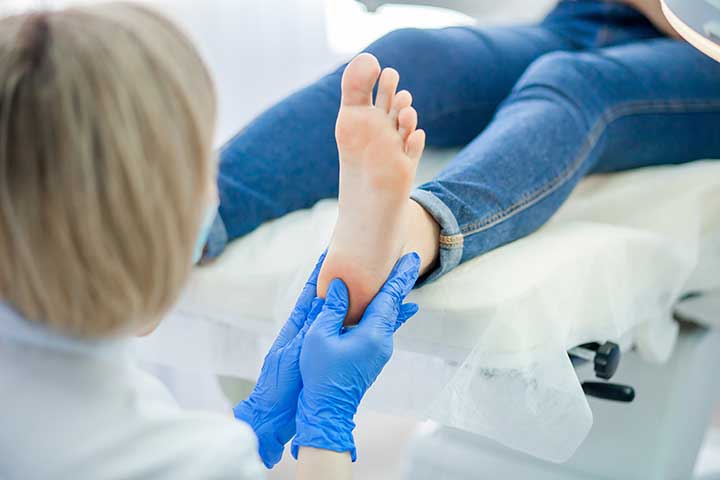Many Clear Lake, Texas, residents experience issues with their feet from time to time. A simple pain in the foot can be an indicator of an underlying podiatry issue, and it can be difficult to determine whether a foot problem is severe enough to see a podiatrist. At Houston Physicians’ Hospital, we understand that patients want to take care of their feet, so we’ve listed a few conditions that may require you to consult a Clear Lake foot specialist.
- Ingrown Toenails
An ingrown toenail occurs when the corners of your nail (often the nail on your big toe) grow into the skin of the toe. It is the most commonly encountered toenail problem in general practice [1]. Some early symptoms a patient may notice include:
- Pain when exerting pressure on the toe
- Build up of fluid around the toe
- Tender, hard, swollen skin around the nail
If left untreated, an ingrown toenail can become infected. Some signs that an ingrown toenail has become infected include a red, swollen, tender toenail that oozes blood.
If you experience any of these symptoms, especially the symptoms of infection, you should see a podiatrist immediately for proper treatment.
- Flat Feet
Pes Planus, fallen arches, or flat feet are all terms used to describe a foot that doesn’t have an arch on its medial aspect. Typically, this condition is seen in toddlers around 2 or 3 years of age but dissipates as muscles and ligaments tighten. However, some patients find that this condition develops during adulthood.
Flat feet rarely lead to a serious medical issue, but they may create problems with walking, running, or prolonged standing. Genetic predisposition and increased physical activity are some factors that can increase your susceptibility to develop the condition in adulthood.
For many patients with flat feet, the main question is when to see a podiatrist. You should consult a Clear Lake foot doctor as soon as you notice even slight pain when walking, because research has proved that early detection and management tend to minimize complications of flat feet [2]. Some of these complications can include:
- Injuries
- Poor postural stability
- Discomfort
After investigating and diagnosing the exact type of condition, your podiatrist will suggest an appropriate treatment plan.
- Bunions
A bunion is a bony, painful hump composed of extra tissue that appears at the base of the big toe over a period of time. It is one of the most common reasons for pain while walking. Bunions tend to form at the joints gradually, causing pain when walking due to the amount of body weight placed on the area with each step.
While bunions often have a genetic link, poor foot structure may contribute to their formation as well. Additionally, weak muscles may also be one of the factors responsible for its formation [3]. Females are more likely to develop this condition, with 35% of women above 65 years of age affected [3].
An obvious change in shape of the big toe and pain while walking should prompt one to see a podiatrist. Depending on the cause of the bunion, a podiatrist will formulate a proper treatment plan. While surgery is commonly done to alleviate the discomfort associated with a bunion, more conservative options include:
- Over-the-counter medications
- Shoe inserts
- Heating pads
- Soaking the foot in warm water
If you believe your feet are suffering from any of the above-mentioned conditions, it is a good idea to schedule an appointment with a podiatrist. The specialized podiatrists at Houston Physicians’ Hospital, will help you identify, as well as correct, the problem in no time. Give us a call at (281) 557-5620 or visit us at https://www.houstonphysicianshospital.com/podiatry/.
References
[1] https://www.ncbi.nlm.nih.gov/pubmed/25770573


